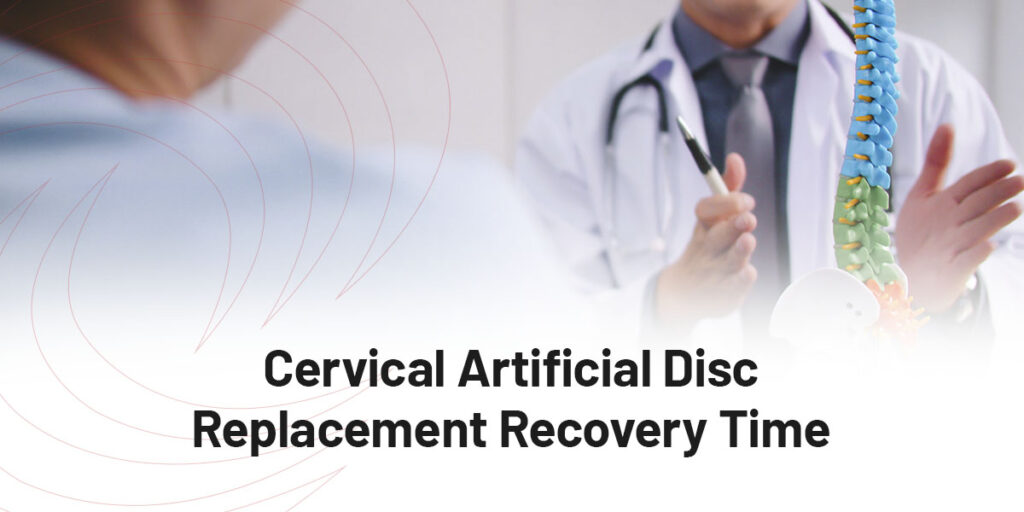
Are you considering or have recently undergone a cervical artificial disc replacement? If so, you’re on the path to relief. Chronic neck pain caused by degenerative disc disease or herniated discs can be debilitating. This advanced procedure removes and replaces a damaged disc with a prosthetic one. It preserves and restores neck motion. The result is relief from pain and improved quality of life.
Surgery is a major milestone. Understanding the recovery process is crucial for a smoother, easier healing journey. Fortunately, the recovery time is often faster and less painful than traditional spinal fusion surgery. Many patients notice improvements within six weeks.
This article walks you through the typical artificial disc replacement recovery timeline. Discover tips to speed up healing and valuable resources for a successful recovery. Let’s dive in and explore what you can expect on your journey!
Cervical artificial disc replacement surgery removes a damaged cervical spinal disc and replaces it with an artificial disc. The cervical spine, or neck, comprises seven vertebrae separated by discs. The discs may become damaged due to degenerative disc disease, injury or wear and tear. Once damaged, they can cause severe pain, numbness or weakness in the neck and arms. Artificial disc replacement restores normal spinal motion, relieving nerve pressure and improving mobility.
This procedure is often considered a better alternative to spinal fusion. It preserves natural spine movement, reduces recovery time and improves long-term outcomes. Spinal fusion permanently joins the two vertebrae. Cervical artificial disc replacement preserves neck flexibility, making it ideal for patients who want to avoid spinal fusion surgery’s limitations. The costs of cervical total disc replacement depend on location, surgeon expertise and implant type.
The cervical artificial disc replacement recovery process involves several phases, each with its own milestones. Recovery time can vary based on your health, age and postoperative care adherence. Here is what to expect at each stage of the artificial disc replacement recovery timeline:
The first few days after surgery are crucial for pain management and proper healing. Most patients go home the same day or stay the night in the hospital and go home the next morning, depending on their recovery rate and health. During this time, you receive medication for pain relief. The healthcare team monitors you closely to ensure there are no complications.
You can expect the following key activities in the first 24-48 hours:
Your focus in the first few weeks is resting, managing pain and gradually regaining mobility. Most patients experience a noticeable reduction in neck pain during the first week. Numbness or weakness in the arms eases from relieved nerve pressure.
At this stage, your doctor provides instructions on:
As the weeks pass, you begin to feel stronger and may be able to resume more normal activities. Physical therapy often begins during this phase. This treatment is essential for strengthening cervical spine muscles and improving flexibility.
Here’s what to expect during this phase:
The healing process continues during the three- to six-month period. You may notice considerable mobility and pain reduction improvements during this time. As neck pain and nerve symptoms subside, you should notice a drastic improvement in quality of life.
Milestones at this stage include:
Most people experience significant relief and improved function in the first three to six months. Full recovery can take up to one year. During this time, the artificial disc settles and the surrounding muscles strengthen.
Here’s what you can expect:
Cervical disc replacement recovery generally follows a predictable timeline. Several factors can influence how long full recovery takes:

A smooth recovery increases your chances of regaining your mobility and quality of life. Follow your doctor’s guidelines for the best possible outcome. Be patient with your body and listen to your doctor’s advice about when to return to normal activities. Slow and steady wins the race! Physical therapy is vital to strengthen the muscles around your neck and spine. These exercises help you regain strength and flexibility.
To ensure the best possible recovery, here are some tips:
The most important tip is to keep a positive attitude. Committing to these steps can help you bounce back quicker, with less pain and better long-term results!

Cervical artificial disc replacement offers a promising solution for chronic neck pain. It is particularly effective for those with degenerative disc conditions. Most patients experience pain relief and increased mobility within the first few months. At Desert Institute for Spine Care (DISC), our board-certified surgeons specialize in cervical artificial disc replacement. We serve patients in Phoenix, Arizona, and surrounding areas.
To discover how DISC can help free you from chronic neck pain, reach out for more information or to schedule a consultation.